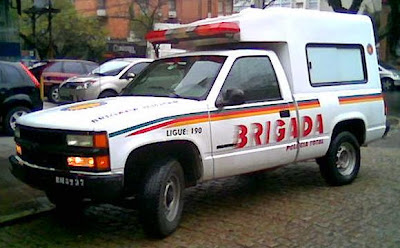Even facing some resistence from the (stereo)typical GM's most loyal customers, the downsizing is a reality that can't be denied. However, even famous for its bigger engines, as a global car manufacturing group, General Motors is ready to face competition in the newer trend in engine development.
Some american customers can still see the downsizing as an european trend, and possibly hard to overcome EPA regulations, but the use of improved smaller engines has been a way to cut greenhouse gas emissions, among other pollutants. The combustion proccess is more efficient due to the higher air flow, then less carbon monoxide is generated, for example. And an old phenomenon widely reported in early turbo setups, the turbo-lag, had its effects reduced with newer engine management systems. GM has been dominating the technology of turbochargers, and ready to face some opponents well-known for their advanced technology, such as BMW. Recently, BMW released a 2.0L twin-turbo straight-4 engine, developing 245hp and 260lb.ft, to replace its 3.0L straight-6 (258hp/230lb.ft.) in some models such as the X1. Considering the manufacturing cost, GM still has an advantage since their engine uses only one turbocharger. Even with the benefits of the smaller engine, a traditional customer would not want to pay too much more for it.
Some people possibly would never wonder something more than 50% smaller in displacement performing the same job of a 4.3L V6, often considered even "too small". For example, it's too hard to see a Chevy ambulance with a 6-cyl engine, or a police vehicle, traditionally powered by large V8's , often even restricted to the so-called "police packages".
Drawing above is only for artistic purposes, Chevrolet Astro was never used by any police department in Brazil
In other markets, most notably european countries, GM has been successful with the downsizing. Some of its models are currently offered only with turbocharged engines in Portugal, such as the Opel Insignia, currently offered in the american market as Buick Regal, featuring a 2.4L Ecotec non-turbo (182hp/172lb.ft.) not avaliable in its european counterpart and the turbocharged 2.0L in a 220hp/258lb.ft. version (this setup would already be enought to replace the 193hp/250lb.ft. 4.3L V6 in the Blazer). Surprisingly, in a segment where 4-cyl engines are perceived as "less luxury", GM is not offering the 2.8L turbocharged V6, that with its 325hp/320lb.ft. could beat the 3.6L currently used from the Chevy Camaro to the Cadillac SRX (without any V8 option in the current generation) delivering 300hp/273lb.ft., again, at higher engine speeds. Even the Vortec 4800 V8 with its 295hp/305lb.ft. could be replaced by the 2.8L without any prejudice in the performance. All of that with systems already avaliable in GM's portfolio.
So, seems like GM is ready to play the downsizing game. What about you?




Downsizing is the future of the engines, and is a matter of time before the big boys v6 and v8 only get to sports. There are already many technologies to replace large motors with smaller engines and better value for consumption / performance.
ReplyDeleteNot just turbocharged gassers, there are also some smaller diesels that can perform well instead of a V-6.
ReplyDeleteSmall engines wouldn't be shown as part of the American cultural influence that is clearly perceived in the customer who wants a Silverado, occasionally using the big engine in a failed attempt to show some power.
ReplyDeleteDownsizing seems to be mainly an European trend, but soon American manufacturers would enter this in a stronger way and when customers get no option they would need to follow this route. Honestly I see it as a good way to reduce our dependence on foreign oil, since it works for the whole world should do so for us.
ReplyDeleteSoon we should see GM invest seriously in the downsizing to beat Ford's new EcoBoost engines range.
ReplyDelete